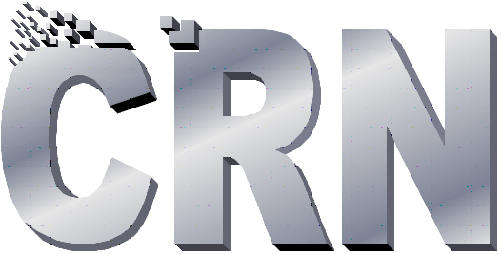 |
|
|
|
|
|
Join the conversation at CRNtalk!
|
James Talton CONDUCTED SEPTEMBER 2002 Dr. James Talton, PhD, is a researcher and businessman who has founded four companies to date. His latest company, Nanotherapeutics, is aiming to develop novel techniques for using nanotechnology to aid in the delivery of hard-to-deliver drugs and proteins.
I got my Ph.D. in Pharmaceutical Sciences and my B.S. and M.S. in Materials Science and Engineering, all from the University of Florida. This is the fourth company I have started, but the first in the drug delivery field. I enjoy what I do, and am looking forward to getting products developed and into the marketplace. We are working many different projects internally and in collaboration, mainly around inhaled, nasal, injectable, and oral delivery of hard-to-deliver drugs and proteins. Question 2: Tell us about Nanotherapeutics. Nanotherapeutics formed as a result of a merger between Nanosphere and Nanocoat Technologies a few months ago. In 1999 the companies were formed to develop the microencapsulation process mainly for sustained-release inhaled drugs for asthma at the time. We had a patent issue a few months ago and over the last three years have worked with over a dozen companies looking for applications where our technologies fit best. We hope to get our first compound into humans early next year. Question 3: Tell us about Nanocoatings. How do they work, and what benefits do they provide? Well, Nanodry is a way to make stable microparticles, and Nanocoat is flexible process which basically changes the surface of the particles for targeted drug delivery. We can produce a coated particle which has slow release or fast release properties, special cell or tissue uptake, or better shelf-life stability, just by changing the surface properties. We are able to 'nanocoat' by forming even smaller particles, in the nanometer range, and using them to coat the larger particles which are the drug itself. We form the nanoparticles that form the coatings using a process known as laser ablation, which is a very flexible way of making the nanoparticles without damaging the coating material. Question 4: What about nanobreath technologies? Does this technique have the potential to completely replace pills and injections? Could people in the future take their medicines and vitamins by inhaling them? Right now, Nanobreath is actually only a diagnostic system for telling if the patient takes his/her medication, which uses a gas sensor to detect a compound in the breath. In general, it may be possible to take many different drugs by inhaling them, but will still be easier to swallow a pill for quite a while. Drug delivery through the lungs, though, offers some advantages that still need to be further developed. Question 5: Is there any risk of infection, or contamination, with this approach? Not really, people inhale a large amount of particulate material, as well as spores and bacteria, on a daily basis. The body is very active in fighting inhaled material that is foreign or not therapeutic. Question 6: It seems that the primary beneficiaries of nanocoating technologies would be the medical and pharmaceutical companies. Could the electronics industry benefit from nanocoatings? We do have a project working with a company on an electronics application, but for many engineering materials there are high energy techniques for forming coatings. The exciting part of the nanocoat process is flexibility of using lower energies means that biological macromolecules can be used as coatings without damaging them. Question 7: How soon will it be before Nanotherapeutics has products on the market? How much will these techniques cost? We hope to go into humans next year, which would mean we could offer products commercially in 2-3 years, or sooner if we collaborate with a large company that can use our process on theis product which is already approved. Question 8: How have investors reacted to your research? Have they been skeptical? Has Nanotherapeutics had any difficulty obtaining funding? Some difficulties, but the current economy is partially to blame. Overall the response has been very good, though. Question 9: Some visionaries, such as Robert Freitas, argue that full-blown nanotechnology is going to completely transform the medical field. They eventually foresee nanobots floating through the bloodstream. Do you think that this scenario will ever come to pass? Not in the next 10-20 years, but it is possible eventually. I think 'microbots' or micron sized implants is a more likely scenario. Question 10: Recently, excitement over the subject of computational chemistry and molecular modeling has increased. How much of your research is pure benchwork, and what proportion involve computer simulations? Do you see the ratio changing in the near future? The majority of our work is benchwork and analysis using several different techniques, but we do use simulations in our animal studies to evaluate drug profiles and effects. Question 11: It seems that nanocoatings could potentially transform the aerospace industry. Has Nanotherapeutics examined that industry? No, that is not our focus at this time. Question 12: What are your plans for the next decade? What are your professional goals for the next decade?
To build the company and get products on the shelves that are better than what
is out there today. This interview was conducted by Sander Olson. The opinions expressed do not necessarily represent those of CRN. |
Copyright © 2002-2008 Center for Responsible Nanotechnology TM CRN was an affiliate of World Care®, an international, non-profit, 501(c)(3) organization.
|